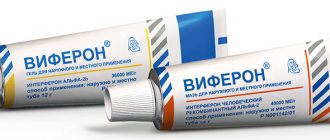What is ARVI?
ARVI (acute respiratory viral infection) is a disease of the respiratory tract caused by a viral infection entering the body.
Among the pathogens, the most common are influenza viruses, parainfluenza, adenoviruses and rhinoviruses. The affected area of ARVI includes the nose, paranasal sinuses, throat, larynx, trachea, bronchi, and lungs. The conjunctiva (the mucous membrane of the eye) is also under the “sight”.
ARVI is one of the most common infectious diseases. Children who attend kindergarten and school are most affected by it - up to 10 times a year. This is due to undeveloped immunity, close contact with each other, lack of knowledge and/or unwillingness to follow preventive measures to avoid infection. Other groups at risk include students, teachers, office workers, healthcare workers and others. However, adults usually suffer less from acute respiratory diseases of viral etiology, which is due to the developed immune system, as well as its resistance to these diseases due to other previous diseases. However, even if an adult is not susceptible to the development of this infection in the body, and he does not have obvious signs of the disease, he can simply be a carrier of the infection, infecting everyone around him.
How is ARVI transmitted?
ARVI is transmitted primarily by airborne droplets (by sneezing, coughing, close conversation), but infection is possible through direct contact with the pathogen (kissing, handshakes and further contact of hands with the oral cavity) or contact with objects of the carrier of infection (dishes, clothing). When a person catches an infection, he immediately becomes a carrier. At the first signs of ARVI (general malaise, weakness, runny nose), the patient begins to infect everyone around him. As a rule, the first blow is taken by relatives, work teams, and people in transport. This is precisely the reason for the recommendation - at the first signs of ARVI, the patient should stay at home, and healthy people, if the media report an outbreak of this disease, should avoid staying in places with large crowds of people (public transport, holiday gatherings on the street, etc.).
Incubation period and development of ARVI
During a person’s contact with an infection, the virus first settles on the mucous membrane of the upper respiratory tract (nose, nasopharynx, mouth) of its potential victim. Next, the infection begins to release toxins, which are absorbed into the circulatory system and carried by the blood throughout the body. When a patient’s body temperature rises, this indicates that the infection has already entered the circulatory system and the body’s protective functions have turned on, because elevated temperature actually destroys the virus and its toxins.
The incubation period of acute respiratory viral infection is about 2 days, i.e. from the virus entering the mucous membrane until the first symptoms of the disease appear. At this time, a person may feel slightly unwell and irritable. Further, as the infection progresses, the symptoms intensify.
After an illness, the immune system does not develop resistance to ARVI, which is due to a large number of different viruses and their strains. Moreover, viruses are subject to mutation. This leads to the fact that an adult can get ARVI up to 4 times a year.
What is the difference between acute respiratory viral infections, acute respiratory infections and colds?
Many people have many inaccuracies and ambiguities on this issue, so let’s briefly go over the topic and find out how these terms differ.
ARVI is a disease of viral etiology, i.e. The cause of the disease is a viral infection.
ARI (acute respiratory disease) is a collective name for infectious diseases of the respiratory tract. It is used if the exact cause of respiratory disease has not been established, i.e. The cause can be either a virus or a bacteria. The group of acute respiratory infections includes acute respiratory viral infections, influenza, parainfluenza, etc.
A cold is a colloquial term that refers to acute respiratory viral infections.
Vaccination
Many people think that there is nothing better than vaccination - one injection and you can forget about the disease, but in reality everything is far from simple. Vaccination is an effective method, but against a specific virus. It is physically impossible to vaccinate a child against all types of viruses during cold season. Doctors especially recommend vaccination against influenza for children and when epidemic outbreaks are predicted, since influenza has the most severe complications6.
Disadvantages of vaccination:
- Vaccination must be done in advance, even if the onset of the epidemic has not yet been recorded.
- Vaccination can only be given to a completely healthy child, otherwise unpleasant complications are possible.
- The effectiveness of vaccinations is high, but it is not universal. That is, vaccination in general does not help against ARVI.
ARVI symptoms
The onset of ARVI is characterized by symptoms such as nasal congestion, runny nose, itchy nose, sneezing and red eyes. In this case, the secreted mucous secretion is liquid and transparent.
After a day, the secretion becomes viscous and thick, and its color acquires yellowish or greenish shades. The body temperature begins to rise to 37.5-38 °C, which indicates the beginning of the immune system’s fight against the infection.
Other signs of ARVI include:
- sore and sore throat, redness and cough;
- tearfulness, pain in the eyes;
- general weakness, malaise;
- swollen lymph nodes;
- lack of appetite;
- insomnia;
- headache;
- aching joints;
- increased sweating;
- chills.
ARVI in young children may be accompanied by:
- diarrhea (diarrhea);
- weight loss;
- anxiety, frequent crying;
- reluctance to eat;
- insomnia;
- elevated temperature.
Complications of ARVI
If you do not take the necessary measures to treat ARVI, complications may develop, which are expressed in the development of the following diseases and conditions:
- Meningitis;
- Otitis;
- Laryngitis;
- Tracheitis;
- Pneumonia;
- Sinusitis;
- Sinusitis;
- Conjunctivitis;
- Coronavirus infection COVID-19;
- Barley;
- Neuritis;
- Heart diseases;
- Exacerbation of other chronic diseases.
Herpes aphthous stomatitis
In children under 5 years of age, herpes simplex can affect the mouth, gums, and tongue (herpes aphthous stomatitis). In this condition, the mucous membrane of the oral cavity turns red, swells, the child begins to drool, small superficial ulcerations (aphthae) appear once within 1–2 days - single or grouped, the child becomes irritable, his gums swell, he complains of pain, loses appetite. The temperature usually rises (can reach 40°C) 1-2 days before the above symptoms.
After 3–14 days from the onset of symptoms, the child’s condition returns to normal, the temperature decreases, aphthae heal, inflammation and pain decrease, and appetite appears. With a more severe course, a repeated increase in temperature, aphthae may appear again, and the cervical and submandibular lymph nodes become enlarged. Recovery in this case may take up to 10 days. A complication of herpes aphthous stomatitis can be the transition of the disease to a recurrent form. The addition of a bacterial infection can cause otitis media, bronchitis or pneumonia.
Treatment of herpes aphthous stomatitis is aimed at eliminating symptoms (lowering temperature, pain relief with paracetamol or ibuprofen, drinking plenty of fluids, rest). Rinsing with aseptic solutions, the use of local anesthetics, antiviral ointments for treating aphthae (acyclovir), steroids in the form of gels and pastes are prescribed. Local treatment with lidocaine-based anesthetic ointments should not be administered to young children.
Causes of ARVI
The first factor that leads to the disease ARVI, as noted above, is the entry into the body of a viral infection - influenza viruses (types A, B, C), parainfluenza, adenoviruses, rhinoviruses, reoviruses, respiratory syncytial virus (RSV), enteroviruses (Coxsackie), coronaviruses and others. Many of them die when dried out, disinfected, or ultraviolet irradiation; infections such as adenoviruses and reoviruses can remain indoors for a long time, not responding to normal preventive measures.
The second factor that leads to the development of ARVI is weakened immunity, which performs the body’s protective functions against those same infections.
The immune system is weakened mainly due to:
- poor-quality nutrition - lack of vitamins and microelements in food, as well as the consumption of unhealthful and unhealthy foods;
- hypothermia of the body;
- stress, which has a detrimental effect on the immune system no less than hypothermia;
- chronic diseases such as diabetes, ulcers, bronchitis, pneumonia, etc.;
- excessive intake of various medications;
- unfavorable environmental conditions in the place of residence or work.
How often do children get sick?
Children under 5 years old experience up to 8 episodes of ARVI per year1. In kindergartens, the morbidity rate is especially high in the first and second year of attendance - 10-15% higher than at other times.
The number of visits to pediatricians with ARVI increases from September to April, and the peak incidence occurs from February to March. In the summer months, the incidence decreases by approximately 3-5 times.
Children are especially vulnerable to influenza. The reason for this is insufficiently developed immunity. The spread of the virus in children's groups (in schools, kindergartens, boarding schools) is occurring rapidly.
Diagnosis of colds in children
The most effective diagnosis of all viral diseases among children is timely contact with a pediatrician. The doctor has information about the epidemiological situation in the region, about outbreaks of the circulating virus in kindergartens and schools. It is very important to collect a detailed medical history of the child and obtain information about possible contacts with patients. All of the above factors will help determine the suspected pathogen.
Among children, virological or bacteriological testing is not recommended, since this does not affect treatment tactics. Most often, children quickly recover on their own, which does not require the use of special laboratory diagnostic methods. Exceptions include a rapid influenza test in children with a high fever and a rapid streptococcal test for suspected acute streptococcal tonsillitis.4
A general blood test, a general urinalysis and other laboratory tests are prescribed strictly by a doctor!
Immunity in children. Why do children get sick more often?
The immune system of children develops throughout childhood.
The immunity of infants is imperfect and this feature is a special mechanism that protects the body from too violent immune reactions to infections.
In the first weeks of life, the baby is protected by the antibodies that he received from his mother and then continues to receive them through breast milk. But such protection is sometimes not enough.
Moreover, while immunity is just developing, periods of maximum risk of developing infectious diseases arise; they are called critical periods:
First critical period
This is a period of vulnerability for newborns, which occurs in the first 28 days of life. During this period of time, the child’s body is protected only thanks to antibodies received from the mother through the placenta and breast milk. The risk of contracting bacterial and viral infections during this period is very high. Premature newborns are a special risk group.
Second critical period
Lasts from 4 to 6 months of life and is accompanied by a decrease in the amount of maternal antibodies.
Due to some mechanisms, which are also still poorly developed, the child’s own antibodies are produced, but they are not yet sufficient to protect the baby. Therefore, the body’s susceptibility to airborne and intestinal infections during this period is also high. Thus, in children under one year of age, all the basic mechanisms of the body’s defense against bacteria and viruses are weakened.
Third critical period
Occurs in the 2nd year of life. It is from this age that the child begins to have more and more contact with the outside world and various infections. The child's sensitivity to respiratory and intestinal infections is still high. The baby's immune defense mechanisms are not yet fully developed.
Fourth critical period
Appears at 6-7 years of age. Children of this age are also prone to infectious diseases, as some indicators of the immune system change.
Fifth critical period
Adolescence from 12-15 years, and the age may vary slightly for boys and girls. This is due to an increase in the secretion of sex hormones, which slightly weakens the immune system. Children of this age are characterized by high sensitivity to viral infections.2










